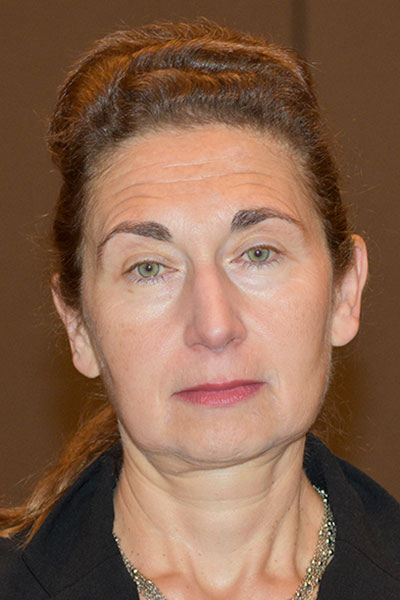Experts in clinical, translational, and basic diabetes medicine and research gave overviews of the past year’s progress in the treatment and prevention of diabetes in the ADA Symposium—Major Advances and Discoveries in Diabetes—The Year in Review.
The session can be viewed by registered meeting participants at ADA2023.org. If you haven’t registered for the 83rd Scientific Sessions, register today to access the valuable meeting content through August 28.

John B. Buse, MD, PhD, Professor at the University of North Carolina (UNC) School of Medicine and Director of the UNC Diabetes Care Center, provided the clinical update. Among the most remarkable advances in type 1 diabetes he listed are the U.S. Food and Drug Administration (FDA) approvals of teplizumab and multiple new insulin pump systems with automated insulin delivery features, he said.
Dr. Buse highlighted a paper released in 2022 showing results from a study of a “bionic pancreas” with a wide range of type 1 diabetes patients. The machine is a “democratizing device” with broad, beneficial results and can lower barriers to automated insulin delivery systems, he said.
In type 2 diabetes, there has been significant progress in drug development, including once-weekly insulin, oral small molecule glucagon-like peptide-1 (GLP-1) receptor agonists, and combination and triple agonist approaches for diabetes and obesity. Several agents were approved for weight loss and glycemic control in children, and there were multiple updates to guidelines and statements from organizations, including the American Diabetes Association® (ADA) and the American Association for the Study of Liver Disease (AASLD).
“This was a year where the guidelines caught up with the drug development and device development over the last few years,” Dr. Buse said.
The greatest challenges of the year in the type 2 diabetes space have been health equity issues and the availability of semaglutide and tirzepatide.
Ultimately, Dr. Buse said, clinicians have the tools to ensure that essentially all people with diabetes or at risk for diabetes should be able to live normal life expectancies without advanced complications.
“We must focus on policy and practice at the community and system level to ensure that these tools are implemented equitably as a matter of social justice or, frankly, we face moral peril,” he said.

Anath Shalev, MD, Professor of Medicine, Division of Endocrinology, Diabetes, and Metabolism at the University of Alabama at Birmingham (UAB), and Director of the UAB Comprehensive Diabetes Center, discussed translational progress this year.
Translation is particularly difficult in type 1 diabetes, Dr. Shalev explained. There have been developments in devices as well as advances in cell-based therapies, and the FDA approved teplizumab to delay stage 3 type 1 diabetes onset. But these are more focused on prevention than treatment, she explained.
However, verapamil is a therapy that may help fill the gap between prevention and treatment of type 1 diabetes. The calcium-channel blocker and antihypertensive also inhibits the expression of thioredoxin-interacting protein (TXNIP) and TXNIP inhibits glucose uptake.
In preclinical studies, oral verapamil was shown to protect against and reverse streptozotocin-induced diabetes, Dr. Shalev explained. Subsequent clinical studies showed verapamil limits the increase in the total daily dose of insulin required to maintain glycemic control and decreases the number of hypoglycemic events. The agent was at the center of the CLVer clinical trial at six pediatric diabetes centers and provided independent validation of findings.
Dr. Shalev said that starting with a human model is helpful in translation, as is targeting the highly conserved pathway.
“It’s also helpful to consider repurposing of drugs that allow you to have something a lot faster,” she said.

Schwartz, MD
Michael W. Schwartz, MD, Professor of Medicine, Metabolism, Endocrinology, and Nutrition at the University of Washington (UW) and Co-Director of UW Medicine Diabetes Institute, covered the basic science advances of the year.
He provided a neuroscience-of-energy-homeostasis perspective, and he highlighted work investigating the potential of the brain as a target for treating diabetes.
The brain’s homeostatic, adaptive response to weight loss is the single biggest obstacle to effective obesity treatment with conventional treatments, he said. Incretin mimetics suppress the effect of weight loss, where the brain signals that food intake should increase. But the STEP-1 trial shows that when people stopped taking semaglutide, the weight that was lost was regained.
“If we want to understand that and have interventions to treat that, we need to think about what is happening to these adaptive responses to weight loss,” Dr. Schwartz explained.
His lab has been interested in the question of whether the brain can be targeted to reset the defended blood glucose level. His focus has been on fibroblast growth factor 1 (FGF1), which has shown antidiabetic effects in mouse models with type 2 diabetes. FGF1 appears to affect agouti-related protein (AgRP) neurons, which are hyperactive in diabetic mice.
Dr. Schwartz reported FGF1’s effect appears to be highly durable in studies.
“I believe these findings justify continued and intensive efforts to develop diabetes treatment strategies that target the brain as well as the pancreas,” he concluded.